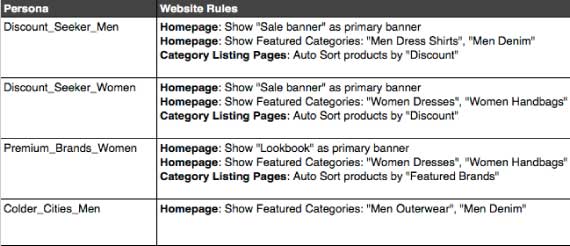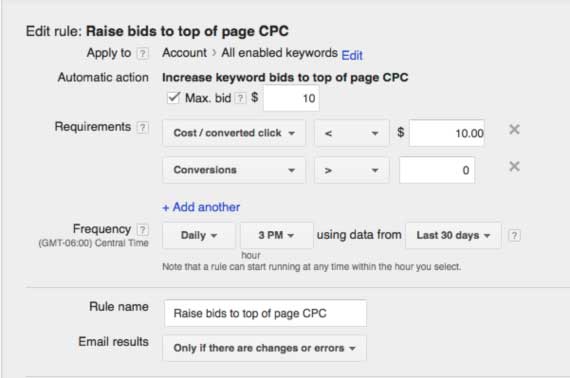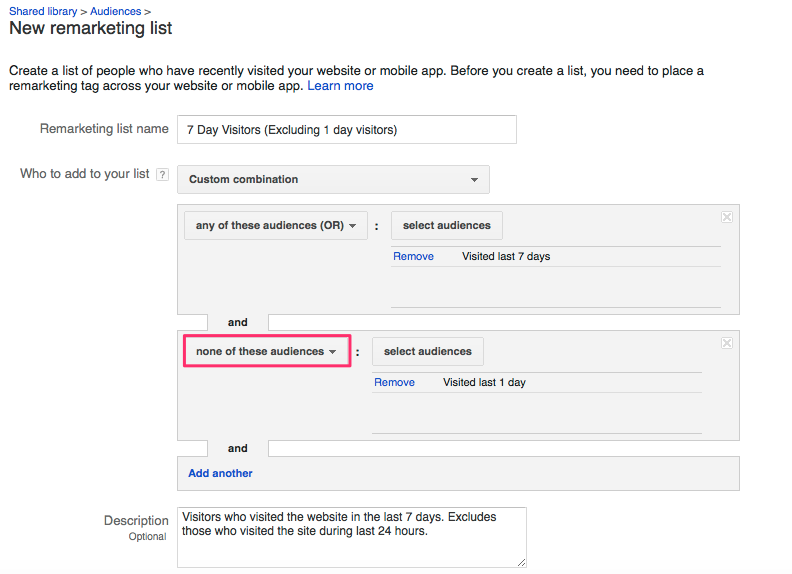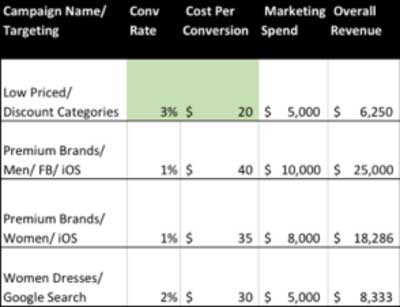As a co-founder of an eCommerce startup in a highly competitive industry, I quickly realized that we had to move beyond the basics of marketing optimization and test some advanced techniques to improve our ROI.
After much trial and error, we found few tactics that were really effective. Although our startup did not survive, the learnings I took away from our extensive experimentation and optimization were priceless. In this post, I will cover some of the techniques that worked really well for us.
Before I share these tactics, I would like to point out that it is crucial to achieve a high level of alignment between your marketing, engineering and product teams. Your engineering team should understand marketing and your marketing team should understand the technology. In today’s world, technology plays a significant role in marketing optimization and it is important for your teams to have that common perspective.
Tactic 1: Customize Website Experience Based Upon Visitor Personas
All marketing channels are not equal. Visitors from different channels (or campaigns) are typically in different stages of purchase cycle and have different aspirations.
For example, visitors coming from your affiliate channels that focus on coupons are more likely to be interested in exploring discounted products. On the other hand, visitors coming from Display channels such as Facebook might need some inspiration and education before you barrage them with pricing and transactional information. Many marketers spend a good deal of time optimizing the initial landing page to make sure it is relevant to the campaign that brought the visitor.
But what about optimizing the rest of the website based upon the visitor’s context?
We found that making subtle changes to the entire website content based upon visitor’s persona (associated with the marketing campaign) resulted in over 20% increase in conversion rate. For example:
- Automatically changing the product sorting algorithm on category pages based upon the type of the campaign that brought the visitors (e.g. automatically showing highly discounted products on top of category pages if the visitors came from “deals & discount” focused campaigns).
- Automatically “injecting” dynamic content through out the website based upon the visitor persona (e.g. Showing “Trendy” and “Lookbook” content to visitors coming from Lifestyle oriented Display FB campaigns).
- Dynamically updating the homepage banner sliders based upon the visitor persona (e.g. if the visitor came from “discount” focused campaign, automatically show the “Sale” focused homepage banner as the main banner).
You don’t need to invest in a highly sophisticated personalization technology to implement these dynamic capabilities. In our case, we used Google Tag Manager to setup above rules to update dynamic content throughout the website. Here are some steps to implement dynamic content for your website visitors using Google Tag Manager:
- Come up with 4 or 5 distinct personas that represent your target customers. (See example below)
- Once you have the personas defined, tag every campaign and Ad Set with the appropriate persona. For example, if you use UTM tracking for your marketing campaigns, you can pass an extra variable in your URL such as “utm_persona” which provides a better context about the visitor.
- Then in Google Tag Manager, you can setup rules that dynamically update certain predefined content zones on your website based upon the visitor persona.
- You can even use JavaScript in Google Tag Manager rules to automatically set a different sorting order for your products (based upon the User persona).
- Within the same rules, you can also fire a special Google Analytics event so that you can track the conversion rate improvement associated with these dynamic rules.
 Sample personas for an online fashion retailer.
Sample personas for an online fashion retailer.
Think about your website as a smart salesperson who is able to understand the context of your customer, and speak the language that resonates the most with the customer. There is a lot of information that can be inferred about the visitor by using the referring campaign’s targeting criteria. Take advantage of this information and personalize your website and landing page content to better manage the visitor’s journey on your website.
Tactic 2: Make Your Campaign Hierarchy as Granular as Possible
Many websites run large monolithic campaigns that target multiple demographics and interests. If you are running Facebook ads, create as granular ad sets as possible so that you can easily spot the best segments that are resulting in greatest performance. For example, my current startup targets early stage entrepreneurs who might be looking for branding help. In this case, breaking the ad sets in the following way allows us to get much better insights about which segment is delivering the best performance:
Yes, managing your ad sets at a much more granular level can lead to additional overhead but it can definitely pay off in the long run. You will be able to find hidden gems much more easily and avoid wasted spend on the segments that are not delivering a strong ROI.
When you are optimizing the ad sets, change one thing at a time and measure results. For example, do not change the ad copy, targeting criteria and bid price at the same time. You will never know what led to the improvement (or deterioration) of your campaign performance.
Keep a log of the changes you are making for optimization so you can refer to them. Once you have documented your changes for 30-45 days, you will start seeing interesting trends such as: ads which include a specific time limit (“only 5 hours left”) result in much better CTR than those with generic messaging (“Sale Ending Soon”).
Tactic 3: Smartly Segment Your Retargeting Audiences
Retargeting is a great strategy to convert some of your recent visitors to buyers. A little bit of segmentation can go a long way in optimizing your retargeting campaigns.
First, it is generally safe to exclude all those visitors from your retargeting campaigns who bounced after seeing your initial landing page. It usually means they were not interested in your product or service. Don’t feel bad. It happens. Maybe they landed on your website accidentally, or they realized that your offering is not a good fit for them. Whatever the reason, I have seen a significant ROI increase by excluding those people who bounced after seeing the initial landing page, or those visitors who spent less than 60 seconds during their visit.
Second, always focus on the lowest end of your funnel as the starting point. This is your bullseye. Customers who left your website from the final payment or conversion step might just need a little bit of push to purchase. Those who left from a page that is higher up in your purchase funnel might need a bit more convincing. Create separate segmented lists that correlate to different steps in your purchase funnel. Your bidding strategy should correlate to audience belonging to these steps. Always bid highest for those visitors who abandoned from the final step of your funnel.
Don’t forget about time-based segmentation. Generally, you will see a much better outcome from your recent visitors compared to those that visited your site, say, 7 days or 30 days ago. When you are setting up time-based lists, pay close attention to setting correct exclusion rules. For example, in your 3-day list, always exclude those who belong to 24 hour list. This way, you can ensure that there is no audience overlap in your 24-hours and 3-day lists.
In Google AdWords, you can setup these exclusion rules by using Custom Combination lists.
One more thing – please set some frequency caps to make sure you are not following your audience till eternity. Showing your ads too often can actually turn off your potential customers. I would recommend setting a frequency cap of no more than 5 impressions in a day. However you can test different caps to see what works best in your situation.
Tactic 4: Consider LifeTime Value (LTV) While Optimizing Campaigns
If your website focuses on multiple product categories, you might find that the lower priced or discounted products deliver the best conversion rate. You might be tempted to spend more on those campaigns that are delivering the best cost per conversion. However, this is not always a good thing.
If you analyze your revenue and profitability from these campaigns, you might find that the most profitable campaigns are those where the customers are purchasing higher value products, and where the customers have a greater probability of making a repeat purchase.
To illustrate this, consider the example in the table below. At first glance, the campaign with conversion rate of 3% and cost per conversion of $20 seems to be the most effective and you might be tempted to allocate more marketing spend towards this campaign.
However, once you bring in the revenue, order value and LTV data, the picture changes completely. With the additional data, you will notice that the campaign that targets men on iOS devices seems to be delivering the best overall margin as well as LTV.
Assuming your goal is to improve your bottom line, your marketing spend allocation should be based upon an overall ROI metric which takes into account the LTV of customers acquired from that campaign. Consider building your own custom dashboard (or use an analytics tool like Kissmetrics) to monitor marketing effectiveness, taking into account your internal profitability metrics such as margin and LTV.
Tactic 5: Make Use of Automation
There is a great deal of automation available in platforms such as AdWords that can help you optimize your campaigns on an ongoing basis. Don’t get me wrong – I am not suggesting you put your campaigns on “cruise control” and expect that the automation will handle your optimization for you. However, there are some fundamental levers that you can set up which would allow you to focus your time and resources on more strategic optimization.
Here are few examples of what you can automate in AdWords:
- Raise bids automatically to top of page bid if the keyword is delivering a strong ROI. Let’s say your target Cost Per Conversion goal is $25. In that situation, your goal should be to maximize the impressions for those keywords that are delivering conversions below your acceptable threshold. You can setup rules to automatically increase the bids to top of the page bid in order to maximize the impressions for these keywords.
- Automatically lower bids if your keywords are not giving a strong ROI. You need to allow enough time and impressions before you start reducing your bids. However, let’s say you expect your keywords to deliver a Cost Per Conversion of $30. You could set up rules to automatically reduce max bids by 20% If your keywords have already generated few hundred clicks, but are delivering a Cost Per Conversion of $40 or higher.
- Setting these rules will allow you to automatically optimize the “extreme” outliers so that you can focus your time and effort on other aspects of your campaign.
 Automated Rules in Google Adwords
Automated Rules in Google Adwords
Conclusion
Marketing optimization is an ongoing journey. There is no finish line. Even though the above tactics worked well in our situation, you might find that they don’t work in your case. That’s ok. The key is to continue to experiment and test. As long as you take a focused and structured approach in experimenting your ideas, you will collect significant insights over time that work well for your business. As architect Buckminster Fuller rightly said:
“There is no such thing as a failed experiment, only experiments with unexpected outcomes.”
About the Author: Darpan Munjal brings over 19 years of ecommerce experience in technology and digital marketing with companies such as Sears, Kaplan as well as venture backed startups that he co-founded. Currently, he is the Founder of Squadhelp, a crowdsourcing platform helping startups engage branding experts for their naming and branding projects. You can connect with him on LinkedIn.


















































































